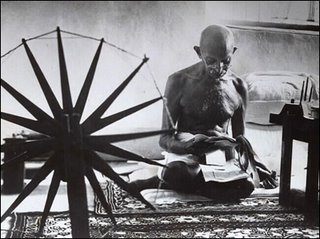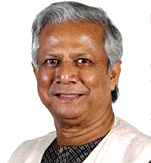ABOUT MICROFINANCE AND MICROCREDIT History — Microfinance emerged in the 1970s as social innovators began to offer financial services to the working poor — those who were previously considered “un-bankable” because of their lack of collateral. Once given the opportunity, not only did clients of MFIs expand their businesses and increase their incomes, but their high repayment rates demonstrated that the poor are capable of transforming their own lives given the chance. This model of lending disproved all conventional thinking. Microfinance was born. Since then, microfinance has become one of the most sustainable and effective tools in the fight against global poverty.
ABOUT MICROFINANCE AND MICROCREDIT
History — Microfinance emerged in the 1970s as social innovators began to offer financial services to the working poor — those who were previously considered “un-bankable” because of their lack of collateral. Once given the opportunity, not only did clients of MFIs expand their businesses and increase their incomes, but their high repayment rates demonstrated that the poor are capable of transforming their own lives given the chance. This model of lending disproved all conventional thinking. Microfinance was born. Since then, microfinance has become one of the most sustainable and effective tools in the fight against global poverty.
How microfinance works — The most common microfinance product is a microcredit loan — usually less than $100. These tiny loans are enough for hardworking micro-entrepreneurs to start or expand small businesses such as weaving baskets, raising chickens, or buying wholesale products to sell in a market. Income from these businesses provides better food, housing, health care and education for entire families, and most important, additional income provides hope for a better future.
In addition, the poor, like all of us, need a secure place to save their money and access to insurance for their homes, businesses and health. Microfinance institutions (MFIs) are now innovating to help meet these needs, empowering the world’s poor to improve their own lives.
The global repayment rate for microcredit loans is higher than 95 percent, which allows MFIs to re-lend these funds to even more clients. By giving the world’s poor a hand up, not a handout, microfinance can help break the cycle of poverty in as little as a single generation.
DETAILS ABOUT MICROFINANCE
The traditional banking system requires that a borrower have collateral to receive a loan. The world’s poorest people have no such collateral. Further, traditional banks are not generally interested in issuing small loans — $50 to $150 — as the interest benefits do not exceed the transaction costs. That said, how has microfinance been so successful?
Microfinance institutions exist in many forms — credit unions, commercial banks and, most often, non-governmental organizations (NGOs). Many microfinance institutions (MFIs) use social collateral in the form of peer groups to ensure loan repayment. Borrowers take out loans in groups of five to eight individuals. If a borrower defaults on her loan, the entire group typically is penalized and sometimes barred altogether from taking further loans. This peer pressure encourages borrowers to be very selective about their peer group members and to repay loans in full and on time, resulting in the higher than 95 percent repayment rates industry-wide.
Microcredit loan cycles are usually shorter than traditional commercial loans — typically six months to a year with payments plus interest, due weekly. Shorter loan cycles and weekly payments help the borrowers stay current and not become overwhelmed by large payments.
Clearly the transaction-intense nature of weekly payment collections, often in rural areas, is more expensive than running a bank branch that provides large loans to economically secure borrowers in a metropolitan area. As a result, MFIs must charge interest rates that might sound high — the average global rate is about 35 percent annually — to cover their costs.
For a financial institution to scale and remain sustainable, at a bare minimum it has to cover its costs. In the example below, a large bank (big lender) can charge anything over 14 percent to recoup its costs, whereas the MFI has to charge a rate of at least 31 percent to cover its costs.

















